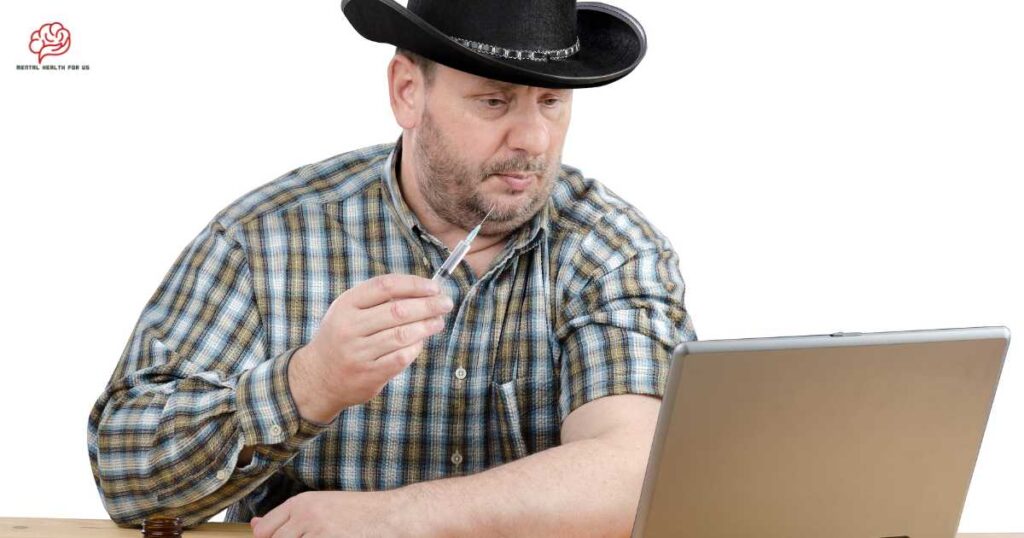Introduction
An atypical antipsychotic, Invega injection (paliperidone palmitate) treats adult schizophrenia and schizoaffective disorder. Healthcare professionals inject Invega Sustenna and Invega Trinza intramuscularly. Invega Sustenna is a monthly extended-release injectable suspension. While Invega Trinza is given every three months. The medication reduces symptoms like abnormal movements, muscle rigidity, and mental status disorders by blocking brain chemicals. To ensure treatment efficacy and safety, follow the injection procedure carefully. This section will thoroughly explore how to give Invega injection.
How to Give Invega Injection: An Overview
Here is a summary of the process as suggested by several clinical studies:
- Preparation: The healthcare professional gathers a prefilled Invega Trinza syringe, alcohol swabs, and a sharps disposal container.
- Positioning: The patient receives the injection in the gluteal or deltoid muscle.
- Cleansing: An alcohol swab reduces infection risk at the injection site.
- Muscle injection: The healthcare professional removes the needle sheath from a syringe and injects the muscle.
- Post-injection: Healthcare professionals should watch for abnormal movements, infection, mental status changes, and other side effects.
A doctor should give Invega injections according to proper procedures and safety precautions. Invega administration should discussed with your healthcare professional.
Pre-Injection Preparation
Healthcare professionals must be ready to inject Invega. This requires a prefilled Invega syringe, alcohol swabs, and a sharps disposal container. These materials must be readily available for a smooth injection process. Healthcare providers should also review the patient’s medical history and identify any risk factors that may affect injection administration. By taking these precautions and being prepared, healthcare professionals can ensure patient safety and efficacy with the Invega injection.
What You Will Need
Clinical trials suggest that several supplies are needed to administer an Invega injection. The Invega medication, syringe, vial, alcohol swabs, cotton balls, and sharps container for safe disposal are included.
Paliperidone palmitate injectable suspension, used to treat adult schizophrenia and schizoaffective disorder, is Invega.
Syringes are used to draw medication from vials and give it to patients. Use the syringe size recommended by a doctor.
The injection site is cleaned with alcohol swabs before injection. This lowers infection risk.
To reduce bleeding after injection, apply pressure with cotton balls.
Finally, a sharps container is needed to safely dispose of needles and syringes. Safe medical waste disposal and needlestick injury prevention achieved.
Healthcare professionals can easily administer the Invega injection and ensure patient safety by having these supplies on hand.
Patient Positioning and Preparing the Injection Site
For safe and effective Invega injections, patient positioning and injection site preparation are essential. A clean and sterile injection site reduces infection risk and optimizes medication absorption.
First, position the patient comfortable and relaxed. The patient should lie on their side with the upper leg flexed and the lower leg extended for gluteal muscle injections. Which are preferred for Invega. This position simplifies injection site access and reduces patient discomfort.
Next, use an alcohol swab to clean the injection site in a circular motion from center to edge. This step is essential for removing skin bacteria and dirt. Clean a wide area around the injection site to ensure sterility.
Air-dry the injection site after cleaning. Avoid touching or blowing on the site to avoid bacteria.
Give the injection carefully as instructed by the doctor after the area is dry. To avoid blood vessel injection, properly insert the needle into the muscle and aspirate before injecting the medication.
To ensure a clean and sterile Invega injection, follow these patient positioning and injection site preparation steps. This improves treatment efficacy and patient safety. For Invega administration instructions, consult a doctor.
Preparing the Syringe and Vial
Before injecting Invega, the syringe and vial must prepared. Step-by-step instructions:
- Gather all the supplies, including the prescribed dosage of Invega Hafyera (1,092mg/3.5mL or 1,560mg/5mL) or Invega Trinza (273mg, 410mg, 546mg, or 819mg), an IM injectable suspension.
- Examine the vial and packaging. Check its condition and expiration date. Do not use medication with damaged or expired packaging.
- As before, wash your hands and clean the patient’s gluteal muscle injection site with an alcohol swab.
- Take the syringe needle sheath off. Insert the needle into the vial and aspirate the correct Invega dosage into the syringe.
- Check for air bubbles in the syringe after adding medication. After tapping the syringe to remove bubbles, carefully push the plunger to remove all air.
- Verify that the syringe contains the correct dosage.
Healthcare professionals can prepare the syringe and vial for an Invega injection by following these steps. For safe and effective Invega administration, follow the healthcare professional’s instructions and the medication’s prescribing information.
Administering the Injection
To administer the Invega injection, proper preparation and technique needed. The vial and packaging must bchecked for integrity and expiration before administration. Clean the patient’s gluteal muscle injection site and hands thoroughly. Pull the prescribed Invega dosage into the syringe after removing the needle sheath, checking for air bubbles and removing them. Make sure the syringe is accurate to ensure proper dosage. Use proper gluteal muscle injection technique. Throughout treatment, patients should monitored for side effects and clinical response. Following these steps carefully ensures safe and effective Invega injections. This guide is for informational purposes only and should not replace medical advice.
Inserting the Needle into the Skin
The needle must inserted into the skin properly when injecting Invega. This ensures safe and effective medication administration.
Make sure the needle is clean and sterile before starting the procedure. Infection prevention and patient health depend on this.
Patient posture is also crucial. Choose the gluteal or deltoid muscle for easy injection access. This makes needle insertion smooth and accurate.
Put the needle gently into the skin at the injection site. Stay calm and avoid sudden movements that could hurt the patient.
Always follow the healthcare professional’s instructions and the Invega injection instructions. You can safely and effectively administer medication to the patient by following proper technique and using a clean, sterile needle.
Conclusion
This article critically explored how to give invega injection. In conclusion, the administration of Invega injections is a medical procedure that should conducted by a doctor. The injection site (deltoid or gluteal) and technique depend on the formulation and patient needs. Invega injections must administered according to the doctor’s instructions to ensure safety and efficacy. It give injecting Invega some risk factors should considered such as blood pressure, blood sugar, family history, history of seizures, history of diabetes, patients’ mental status, signs of infection and other adverse effects of Invega injection. Patient involvement should include open communication with their healthcare team, reporting any side effects, and following their psychiatric treatment plan.
FAQs
Which is the best site for Invega injection?
A healthcare provider chooses the Invega injection site based on the patient’s needs and the formulation. Your healthcare provider will consider formulation, dosage, and your medical condition when administering Invega injections, so follow their instructions.
Where do I give Invega?
Invega injection sites vary by formulation and usually determined by a healthcare provider. However, Deltoid and gluteal muscles can injected.
Can Invega be given in the deltoid?
Yes, Invega injections can given in the upper arm deltoid.







